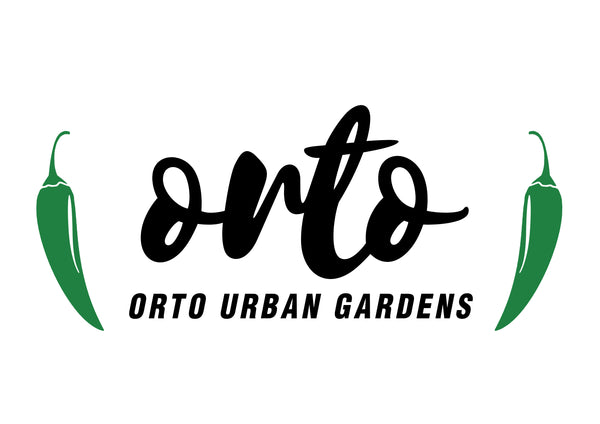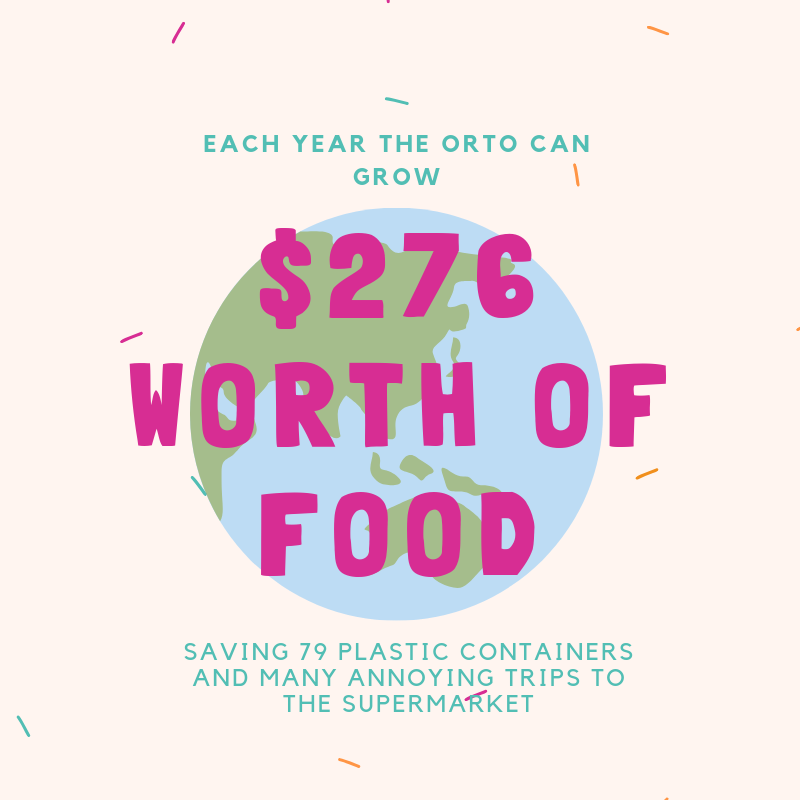In our household we've got a number of wicking beds and Orto self-watering planter boxes providing a constant supply of fresh food (whatever is in season at the time). But we also buy food from the supermarket which is wrapped in plastic.
I've been wondering exactly how much food the Orto box has been providing and was it helping to reduce the amount of plastic packaging used? So I've done a little bit of research, plus some guesstimation and come up with the following:
The most common Orto box size is 1.2m x 0.42m (we'll call that 0.5m2).
Proper trials from Biofilta record 16kg of food grown per 1m2 of wicking bed (in Melbourne).
Anecdotally, I tried to think what I would harvest from a single Orto box over the course of a year. I've used the packaging quantities from Coles online for reference. The result is 6.5kg of fresh food per Orto, per year, (remember this box is 0.5m2 so it lines up ok with the Biofilta figure of 16kg per 1m2.)
Table 1. Annual Food Production for each Orto self watering planter.
|
|
Description |
g |
price |
qty |
value |
kg |
|
|
Australian Continental Parsley |
15 |
$3.00 |
15 |
$45.00 |
0.225 |
|
|
Lettuce Rocket Salad Mix Prepacked |
120 |
$3.00 |
10 |
$30.00 |
1.2 |
|
|
Oregano Punnet |
10 |
$3.00 |
8 |
$24.00 |
0.08 |
|
|
Organic Green Kale |
20 |
$5.50 |
12 |
$66.00 |
0.24 |
|
|
Cherry Field Tomatoes Prepacked |
250 |
$3.50 |
18 |
$63.00 |
4.5 |
|
|
Basil Punnet |
15 |
$3.00 |
16 |
$48.00 |
0.24 |
|
|
|
|
|
79 |
$276.00 |
6.485 |

What blows me away is the figure of $276 worth of food produced each year, from that 0.5m2. Thats great, but the point of this exercise is looking at waste reduction and now I am fairly confident that by growing a small amount of food at home we are reducing the demand for 79 plastic containers.
But there's more. Food waste is a huge issue in society, and apart from it being a human tragedy its also a very large contributor to climate change (if food waste was a country it would be the third largest culprit for greenhouse gas emissions).
According to Foodwise, the average Australian household wastes 345kg of food each year, which goes to landfill and produces 655kg of CO2-e. That is the same amount of emissions contributed by an average household's electricity usage for 2 months. This emission info is from Watchmywaste.
If you have a small garden, or even a Orto planter on your balcony, all this food waste can become compost (which has zero emissions). Compost is a bit tricky and requires some motivation to get in the habit. It helps if you have plants responding to your compost with extra growth and productivity.... which in turn helps capture even more Carbon from the atmosphere.
So in summary. If having fresh food growing at your back door doesn't entice you, saving $276 per year doesn't convince you, and eliminating 79 plastic containers from your life doesn't thrill you... enjoy your wait in line at the checkout at Coles.


4 comments
lzAeRrxnYFPipwN
kasWzpVuhA
nYekIhvyLTjG
sRxTWqCPiwvcyl